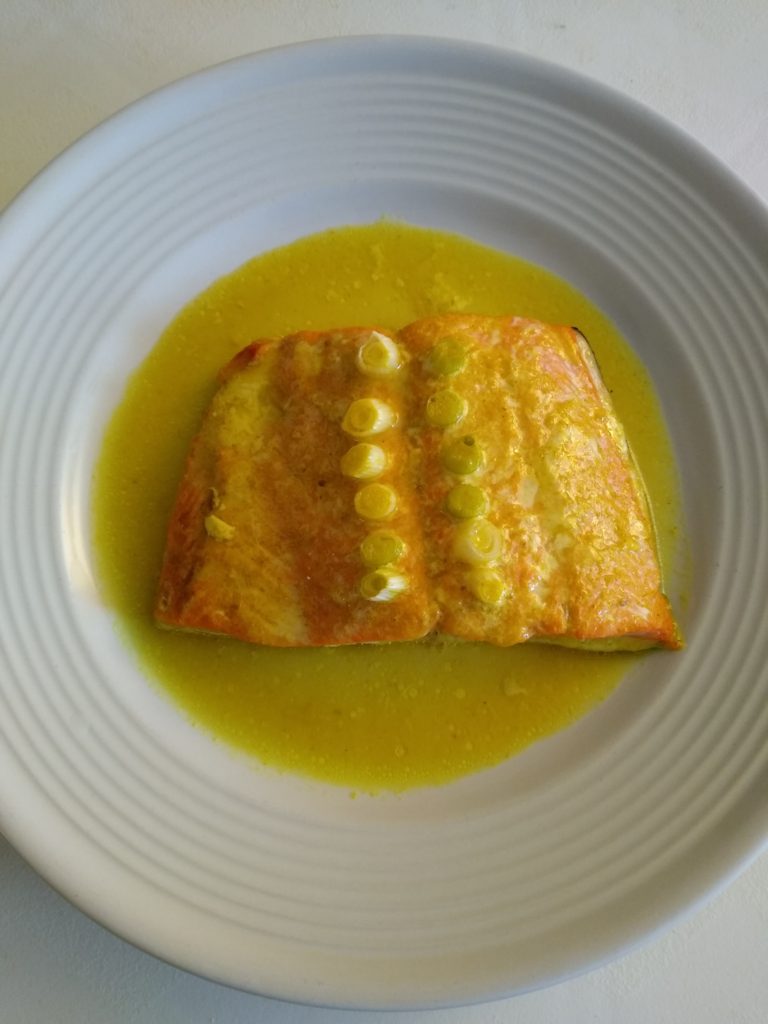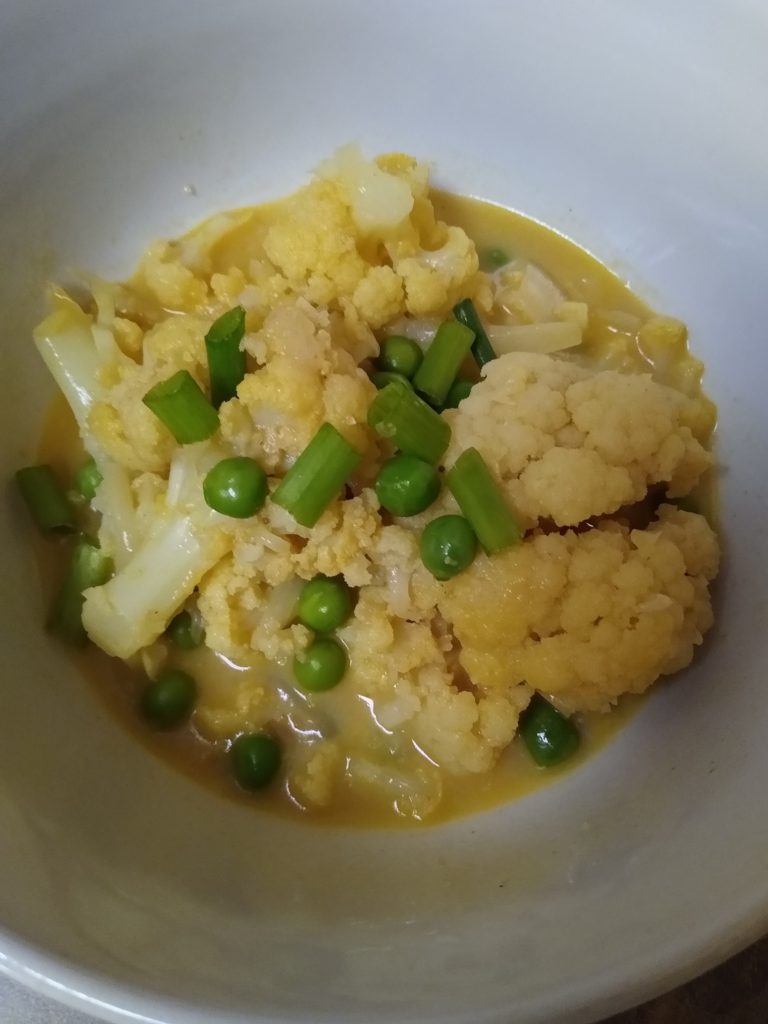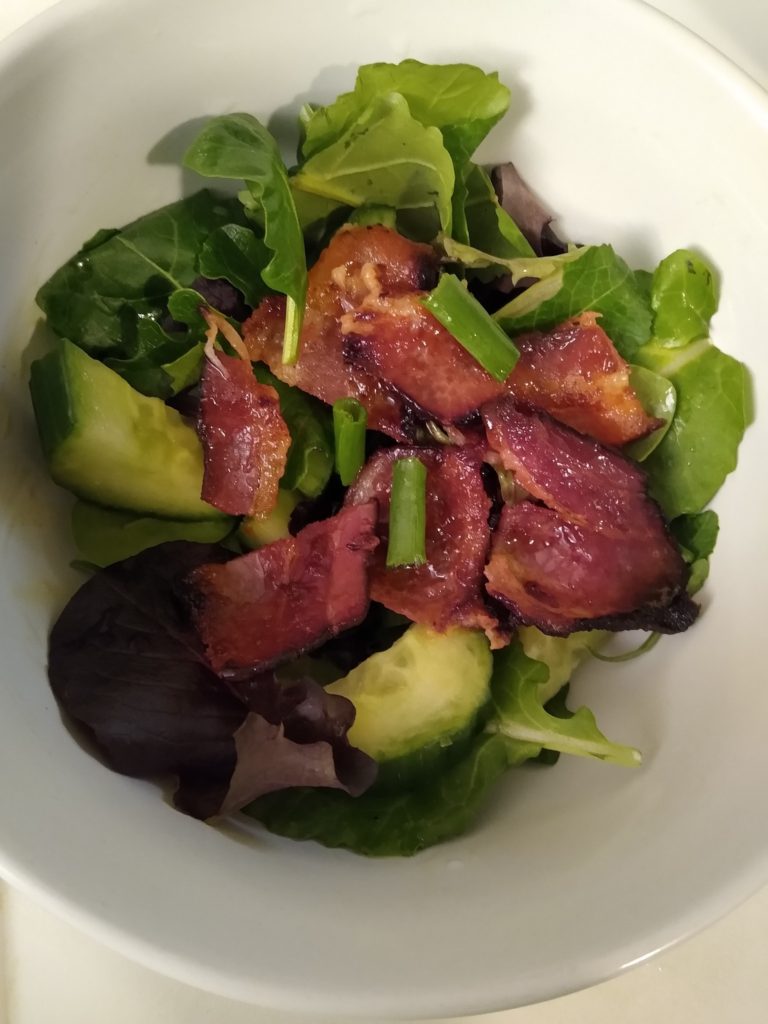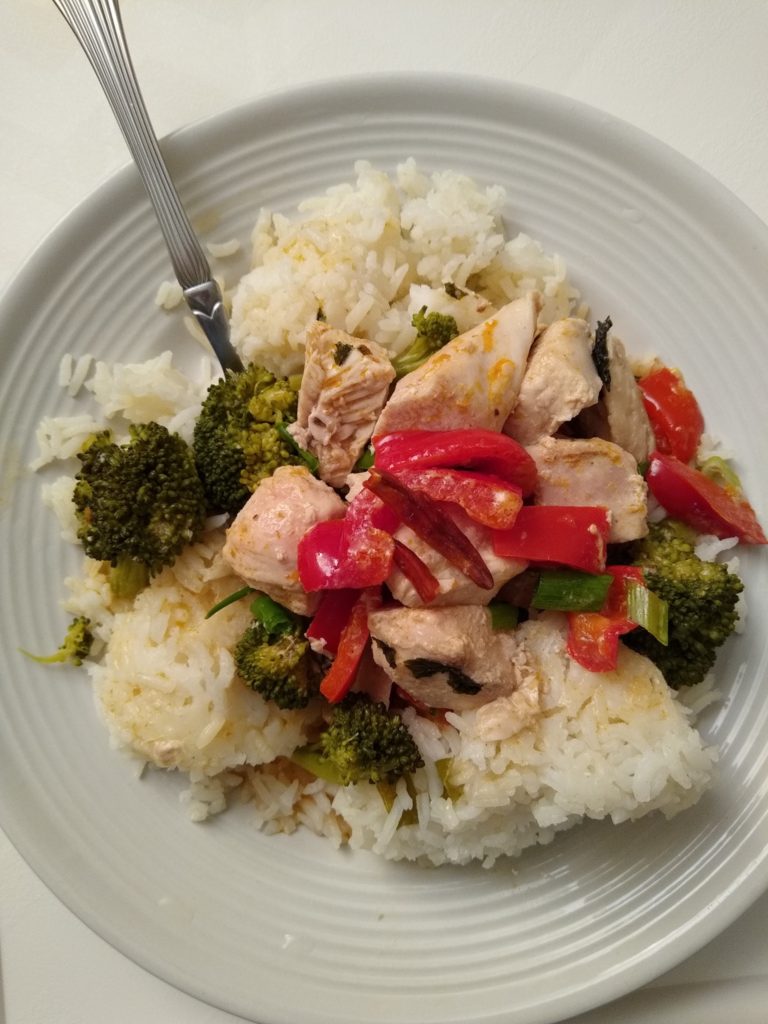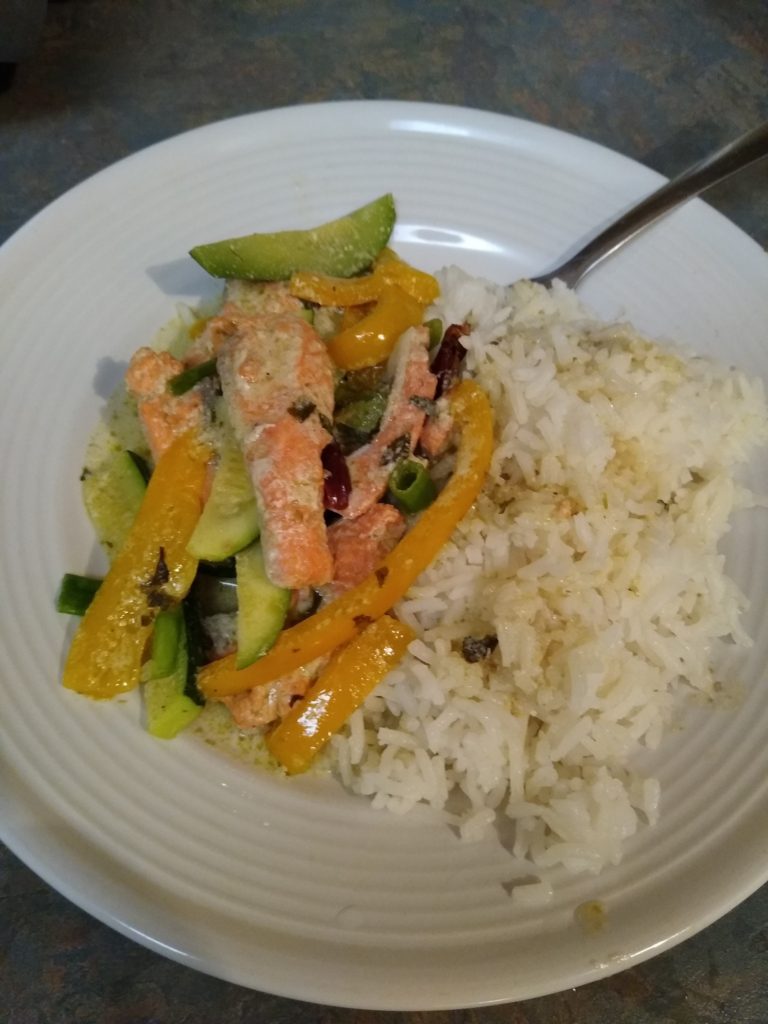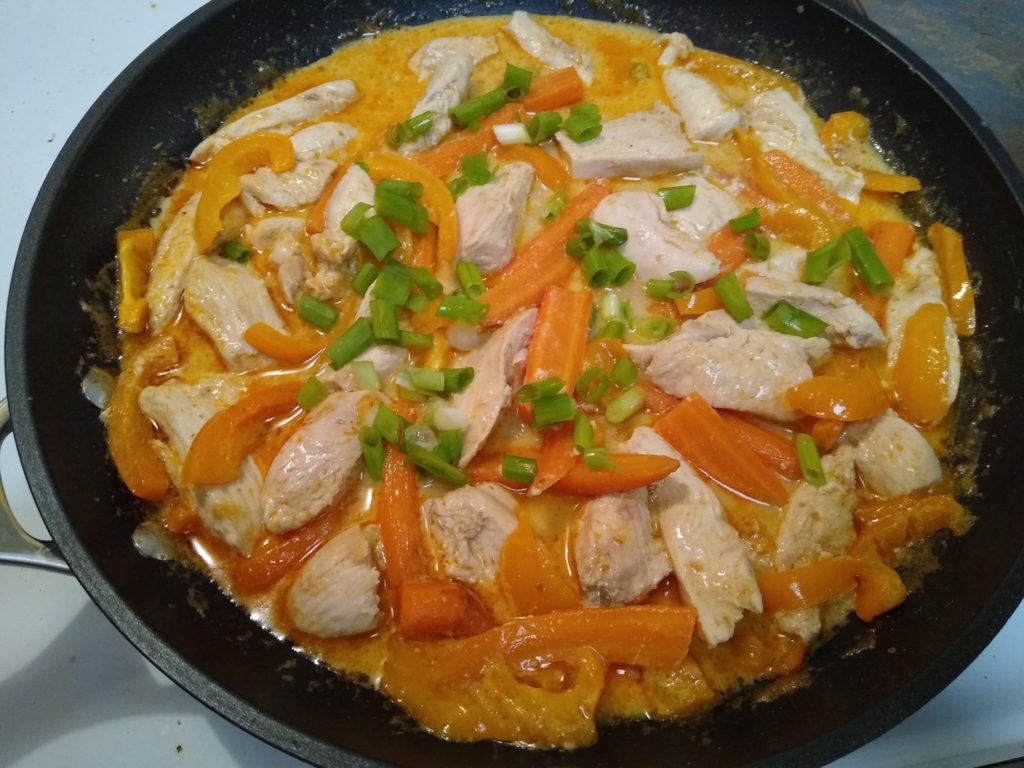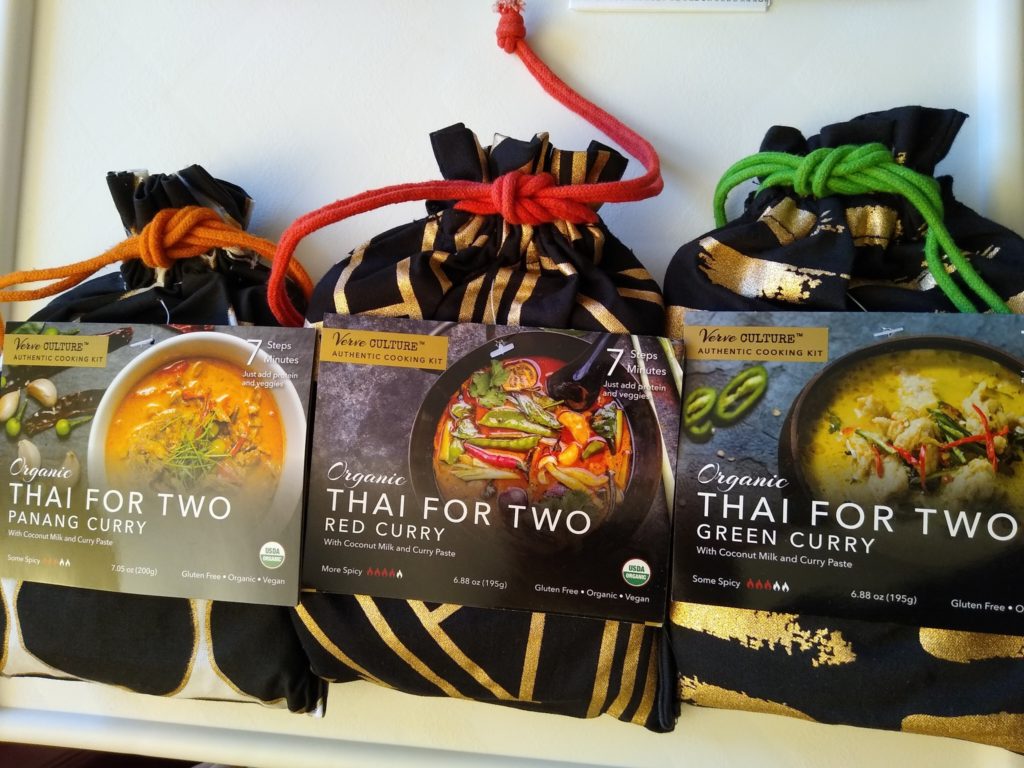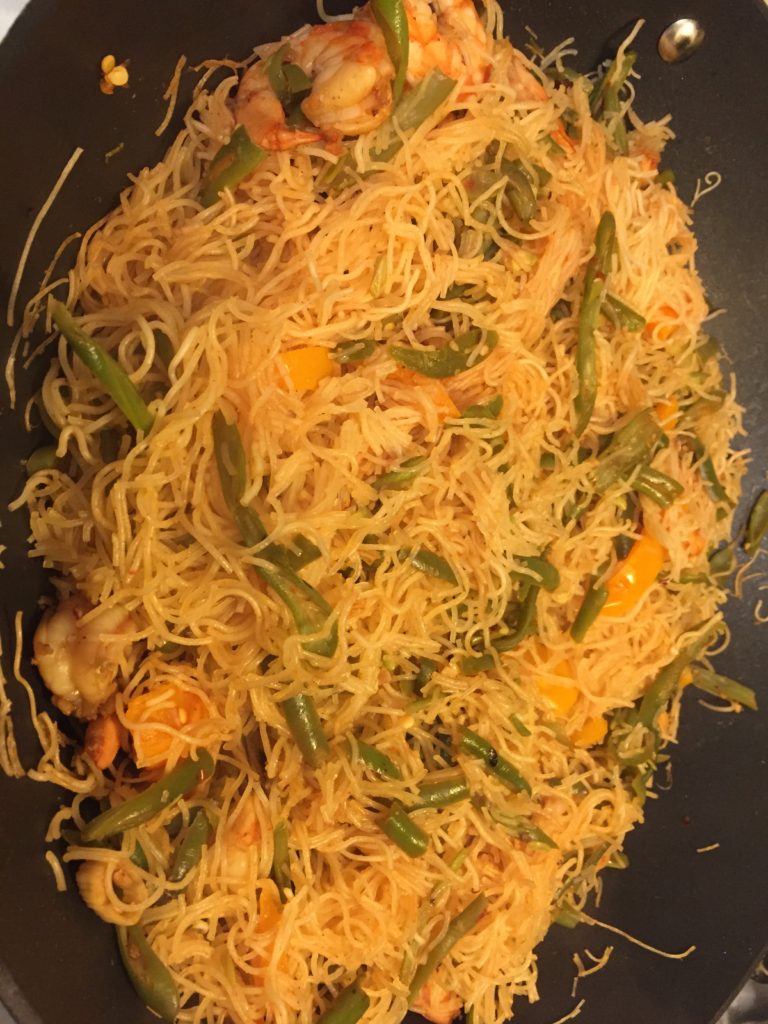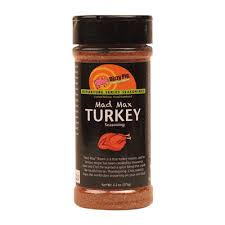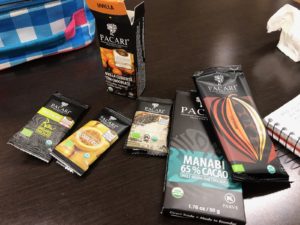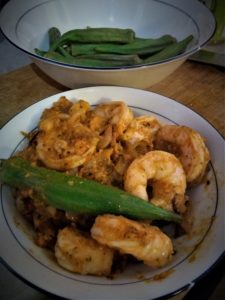-

-
Roasted Potatoes with Garlic and Shaking the Tree
-

-
Chris Capell Carving a Delicious Tsunami Spin-Rubbed Duck.
-

-
Pineapple Head-Rubbed Bacon.
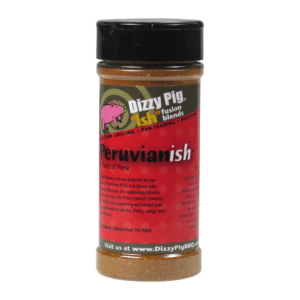 It’s time for another Product Roundup!
It’s time for another Product Roundup!
First up is Dizzy Pig. We’ve been fans of (and writing about) competitive griller and BBQ supply store owner, Chris Capell’s spice rubs for years, and he keeps coming up with new varieties. We recently visited his new Manassas location, snacked on Tsunami Spin-rubbed chicken and duck, and Pineapple-rubbed bacon, and came home with some of his seasonings.
We came home with newer blends, Peruvian-ish, Crossroads, and Peking, and traditional blends, Shaking The Tree and Pineapple Head. Shaking The Tree (lemon pepper) was wonderful with roasted potatoes and garlic. We tried Crossroads on burgers; it competes pretty closely with their best seller, Dizzy Dust, for BBQ flavor, although Chris recommends the latter for larger cuts of meat. Peking, we haven’t gotten to yet, although we will try it next time we cook skin-on chicken such as wings or thighs.
So, what about Peruvian-ish? WE LOVE IT! Seriously! It has that Peruvian flavor you can only get with aji amarillo. We tried Peruvian-ish, on a mixture of roasted onions, orange bell peppers, and yellow squash, and on both beef and turkey burgers, and it worked wonderfully. Flavor of the Andes indeed! This is the first rub since Raging River (our favorite) that seems to go equally well with a huge variety of proteins and vegetables. And, both are very different flavor profiles, so they don’t compete. Now, we have to try some of these Peruvian-ish recipes!
-

-
VIKA Wines
-

-
VIK Vineyard
-

-
Yes, we were at Fogo De Chao!
We recently got to try several Chilean red wines from the 10,000 acre holistic vineyard, VIK: the VIK 2012, Milla Cala 2013, and La Piu Belle 2011. All are red blends around 14% alcohol, and delicious. They are great paired with grilled or roasted meat, which explains why Fogo De Chao featured them at a recent media event. You can’t go wrong with a forkful of picanha in one hand and a glass of a great red in the other. I will admit that I (as planned) ate a plateful of their pork ribs, which did not disappoint.
Fogo is the first U.S. restaurant brand to be pouring VIK Chilean wines. Fogo is offering two of the three VIK varietals in all of their Fogo restaurants nationwide – Milla Cala (Red Blend, Millahue Valley, Chile, 2013) and VIK (Red Blend, First Growth from Chile, 2013). Pricing varies by market, but those listed below are for the D.C. region:
- Milla Cala: $13 (3 oz. glass); $25 (6 oz. glass); $93 (bottle)
- VIK: $22 (3 oz. glass); $42 (6 oz. glass); $164 (bottle)
I recommend getting on Fogo’s email list, since they will send you promotions. They recently emailed us about their $39 per person restaurant month (August) promotion, and you need to show up with a copy of their message to get the special.
Nelly’s Organics (based in California) produces exceptional vegan candy bars. Picture the popular but not very healthy candy bars of your youth (Milky Way, Snickers, Mounds, etc.), but organic and dairy (animal product) free. They need to be kept refrigerated and are carried locally at Mom’s Organic Market (for $3 each and are well worth it). We sampled the following varieties (multiple times): Coconut, Nutty Nougat, Peanut Butter & Coconut, Caramel Nougat, German Chocolate, and Double Chocolate. We haven’t come across the Vegan Salted Caramels, but will make sure to try them if we do. Our favorites are the Nutty Nougat, Peanut Butter & Coconut, and Caramel Nougat. We grab a couple whenever we are at Mom’s.
How did Carla (the Founder) get started in the candy bar business? She started making the vegan candy bars when her kids were little. She was just trying to copy the candy bars her kids liked and wanted a cleaner, healthier option. She never really intended to start a business, but once her friends and family tasted her creations, the requests kept on coming. Eventually she realized there might be a market for her candy bars, and we are glad she did.
-JAY
